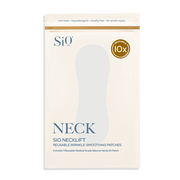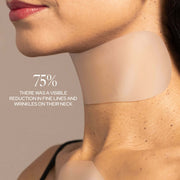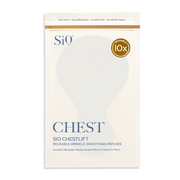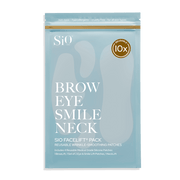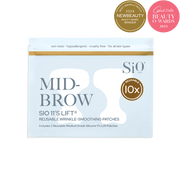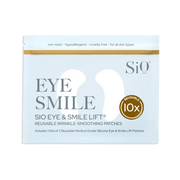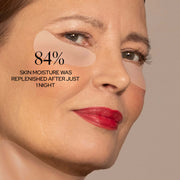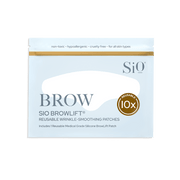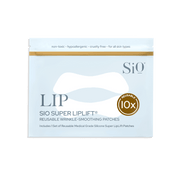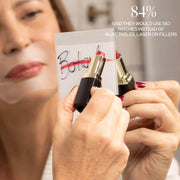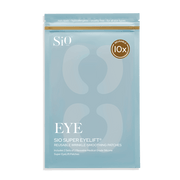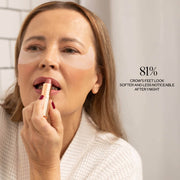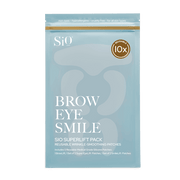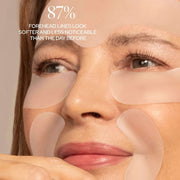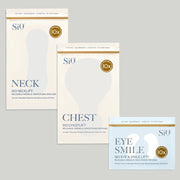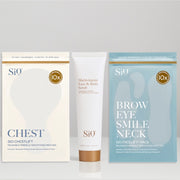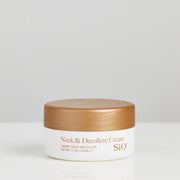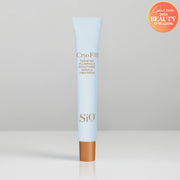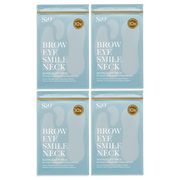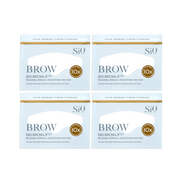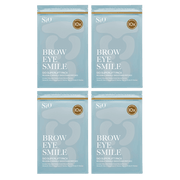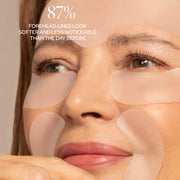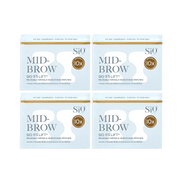How Often Should You Use A Face Mask?

A good skin care regimen includes a number of different steps—cleansing, toning, hydrating, exfoliating, and so on. That sounds like a lot, but every step is crucial for gorgeous, younger-looking skin. Luckily, with all of the products available now, keeping up with your skin care routine is easier than you think.
When it comes to cleansing, for example, you can find plenty of salon-quality products at your local drugstore. When it comes to hydrating, medical-grade remedies like the SiO Beauty Wrinkle Rescue Pack deliver deep hydration to plump, firm, and smooth your skin.
Another amazing, pampering product for your skin is a face mask! After all, there are so many different types of face masks—each with its own benefits—that using one is like taking a trip to the salon. If you’re craving a little something extra from your skin care routine, then a face mask is definitely the way to go.
Most face masks target a specific problem, and with all of the different options—from peel and scrub masks to heating and mud masks—you could easily apply a different type to your skin each day of the month!
While that is possible in theory, doing face masks on a daily basis doesn’t come without risks. You know the phrase “too much of a good thing”? Well, it applies to face masks just as it does most other things in life.
Even though two masks are designed to address different problems, they may contain similar ingredients. And these ingredients aren’t always safe to use every day. So how often should you use a facemask?
In order to answer that question, it’s important to know what each type of mask is used for and what to look out for. In this blog, the experts at SiO Beauty share everything you need to know to decide how often you should use a face mask.
Face Mask Ingredients To Know

In order to protect your skin, it’s especially important to check the ingredients listed on each mask’s packaging. Depending on what you’re hoping to achieve, you’ll want to look for specific words and phrases. For example, the following words are important to note:
- Anti-aging
- Exfoliating
- Anti-acne
Products designed for the above purposes sometimes contain harsh chemicals that can damage your skin if used more often than recommended. On the other hand, ingredients that are safe for daily use include:
- Aloe
- Antioxidants
- Hyaluronic acid
- Niacinamide
- Vitamins
Now that we understand that not all products are suggested for daily use, let’s take a look at how this general advice applies to specific products, like the charcoal face mask, the Korean face mask, the DIY face mask, and more.
How Often Should You Use A Face Mask?
Before we dive into how often you should use a face mask, let’s talk about how to use one. Remember to always cleanse your skin before masking to achieve the best results. You can also exfoliate before applying a face mask to help the formula better penetrate your skin.
Once your skin is clean and prepped for your mask, apply a chickpea-sized amount to your face (and neck if you desire). Don’t overdo it, as only a thin layer is usually necessary to be effective.
Now, let’s take a look at specific types of face masks.
Charcoal Face Masks

Although they can be very beneficial, charcoal face masks can also be extremely harsh and may damage your skin. While these masks can be useful for certain problems, the result is often not worth the risk.
First of all, we will say that the main ingredient—charcoal—does have some benefits for your skin. When you apply activated charcoal to your skin, it draws bacteria, toxins, chemicals, dirt, oil, and other micro-particles to the surface. It then absorbs those foreign substances and carries them away when you rinse the charcoal off your face.
So what’s the problem, then? Charcoal can strip all of the natural oils from your face—even the beneficial ones that act as a natural barrier against dust, bacteria, dirt, UV rays, and other harmful agents. When you peel off a charcoal mask, you’re exposing your delicate skin to all of the toxins and pollutants in the air.
Because of the aggressiveness of charcoal face masks, we recommend using one a maximum of once per month. Anything more can cause significant issues later on.
Gelatin Face Masks

Like charcoal face masks, gelatin face masks are tough on your skin. While gelatin face masks are great for boosting collagen production (that’s because gelatin is actually made out of dried animal collagen!), that benefit is often offset by the irritation caused during removal.
We’ll start with the good—as a gelatin face mask dries on your skin, it adds moisture and nutrients that stimulate and promote collagen growth, heal damaged skin, improve elasticity, and add volume.
While this process is going on, the gelatin is also lightly binding to the dirt, oil, dead cells, and toxins that are on the surface of your skin. When you peel off your gelatin mask, all of these things are stripped away, along with a small layer of your skin. Once in a while, this is beneficial, but stripping your skin away isn’t something you want to do on a daily basis.
Because of the potentially damaging effects, we recommend using a gelatin face mask no more than two times per month.
Korean Sheet Face Masks

Korean sheet face masks have recently exploded in popularity. While some of the ingredients they contain can help heal your skin, the real benefit comes from the moisture the masks provide.
Unfortunately, the effects of a Korean face mask may only last as long as the sheet is wet. Once the sheet has dried out (after about 20 minutes), it can actually pull vitamins and minerals away from your skin. Certain Korean face masks also contain harmful chemicals, so it’s important to limit your use and read the ingredients you are applying to your skin very carefully.
With the right Korean face mask, you could wear it every day. However, the extra ingredients may clog your pores and cause more harm over time than the mask can counteract. That’s why we recommend using a Korean face mask a maximum of once per week.
Clay Face Masks

Clay face masks work well for pretty much every skin type, without causing irritation or redness. These masks are super versatile and can be effectively used for treating both acne and signs of aging. So if you’re one of the unlucky ones who have to deal with both those conditions simultaneously, then the clay mask is what you want to try.
One of the best benefits of clay masks is that as they remove excess oil from your skin while saturating it with the nutrients it needs. That’s because clay masks are filled with minerals your skin craves. As the mask absorbs on your face, nutrients sink into your skin and make it look soft, smooth and even brighter!
Still, too much of a good thing is never that good. So how often should you use clay face masks? While they can be used daily, that’s not always necessary. Depending on your skin type, using a clay mask one to two days per week can do wonders to help you restore and maintain a radiant complexion.
Tea Face Masks

There’s a reason so many people swear by the benefits of green tea (matcha), kombucha (a.k.a. black tea ferment), and other tea-infused drinks. But tea isn’t just for sipping—it’s super beneficial when applied to your skin.
When you apply a tea-based face mask, your skin is treated to a rich dose of vitamins, which nourishes your skin and helps rid it of all the free radicals from your day-to-day life. Different types of tea masks target different problem areas.
Green Tea Face Mask
Green tea masks are best for improving skin complexion and fighting signs of aging.
Black Tea Face Mask
Black tea contains natural antioxidants that neutralize free radicals and promote your skin’s longevity.
Rooibos Tea Masks
Rooibos tea maks are particularly helpful for fighting pimples and acne.
Even though tea masks are natural and minimally harmful for your skin, we suggest using them at most once per week. That’s just the right amount of times to reap the amazing benefits tea masks have to offer.
DIY Face Masks

DIY face masks are a fun and beneficial addition to any skin care routine. They’re super easy, and you can often find the ingredients you need right in your own pantry. DIY face masks contain a wide range of natural, healthy ingredients like:
These foods are beneficial for your skin when eaten, and even better when applied topically. And depending on the ingredients, you can treat a variety of skin problems without the risk of side effects. Because of their natural nature, you can use a DIY face mask as often as every three days.
It’s important to note that DIY face masks may not provide fast or lasting results. If you’re searching for results you can see in just one use, we recommend focusing on a more effective solution like the silicone patch, which we’ll discuss in detail later in this article.
A Note About Citric Acid
Light amounts of citric acid from citrus fruits—like oranges, grapefruits, lemons, and limes—can help to brighten and exfoliate skin while also helping to fight against acne. However, if left on too long, citric acid can bleach and burn your skin. As such, we recommend avoiding any type of mask that contains citric acid.
If you do choose to use a citric acid product (or include one in your DIY face mask recipe), proceed with caution. If you feel any discomfort during your treatment, remove the mask immediately and rinse your face with cool water.
Moisture: The Real Face Mask Powerhouse

All skin types can benefit from additional moisture. Even dry, blemished, dehydrated, or sunburned skin can see significant improvement when properly nourished and moisturized. The unfortunate thing is that most face masks don’t provide enough of this vital benefit.
Luckily, there is a solution that focuses on putting as much moisture into your skin as possible. It’s not an ingredient you can find in your kitchen, and it doesn’t come in a tube. Instead, it’s something you wear while you sleep that hydrates, plumps, and firms your skin.
If you haven’t guessed it already, the miracle product that we’re referring to is the silicone skin patch.
Silicone skin patches were first developed for use by hospitals to help heal stubborn scars and burns. The results showed an ability to heal skin and return it to its natural, smooth, scar-free appearance. The results were so profound that these patches eventually came to the attention of SiO Beauty founder Gigi Howard.
Gigi recognized that the same concept could be used to heal conditions like crepey skin and wrinkles after years of feeling insecure about her chest wrinkles (developed from side sleeping) and looking for a simple, non-invasive surgery.
Experience Powerful Healing Every Night
SiO Beauty patches hydrate your skin as you sleep while providing a solution endorsed by doctors across the world. Most importantly, they do so without the harmful ingredients that trendy face masks often contain.
So, how often should you use a face mask? Well, that depends on the type of mask you’re using, but keep in mind that too much of a good thing isn’t always good.
When you do use a face mask, especially one that strips your skin of moisture (ahem, charcoal mask!), be sure to rehydrate and replenish much-needed moisture to your skin with SiO Beauty Patches every night. After you rinse off your mask, put your patches on before bed and wake up to beautiful, youthful skin in the morning! Voilà!



